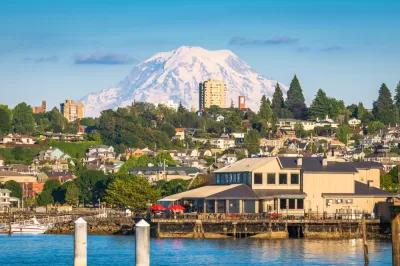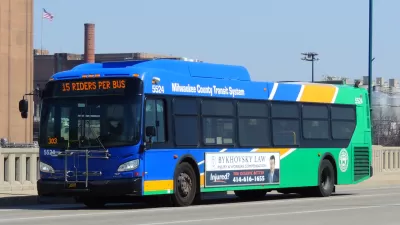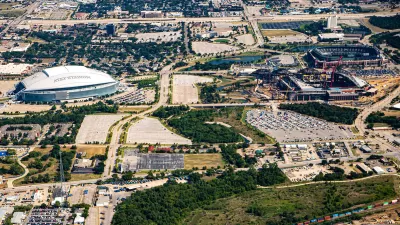Advocates are calling for a 0.1 percent sales tax increase that could fund improved service and lower fares for the city's struggling transit system.

Writing in The Urbanist, Chris Karnes argues in favor of a 0.1 percent city sales tax to benefit public transit in the Tacoma area, where "Pierce Transit has struggled to keep even hourly service on some routes." Despite several successful city ballot measures supporting transit and significant transit investment in neighboring Seattle, Tacoma's transit agency still suffers from a substantial funding shortage and a lack of support on the county level. "This inaction on reliable and accessible transit service when paired with the crises of climate action and affordable housing begs the question of whether the City of Tacoma should be doing more to address the problem," writes Karnes.
While the argument has been made that Tacoma should wait for Pierce Transit to develop the momentum to have another go at a countywide measure, that’s akin to asking a toddler to run a 100 meter dash. We must first walk, then run: build support for transit at a city level and then expand that base of support.
Karnes claims that the tax increase is necessary to improve Pierce Transit's service and suggests longer operating hours, late-night service, free fares on certain routes, and a variety of extensions and rerouting projects.
FULL STORY: A Plan for Addressing Transit Equity In Tacoma

Montreal Mall to Become 6,000 Housing Units
Place Versailles will be transformed into a mixed-use complex over the next 25 years.

Planetizen Federal Action Tracker
A weekly monitor of how Trump’s orders and actions are impacting planners and planning in America.

DARTSpace Platform Streamlines Dallas TOD Application Process
The Dallas transit agency hopes a shorter permitting timeline will boost transit-oriented development around rail stations.

Study: 4% of Truckers Lack a Valid Commercial License
Over 56% of inspected trucks had other violations.

Chicago Judge Orders Thousands of Accessible Ped Signals
Only 3% of the city's crossing signals are currently accessible to blind pedestrians.

Philadelphia Swaps Car Lanes for Bikeways in Unanimous Vote
The project will transform one of the handful of streets responsible for 80% of the city’s major crashes.
Urban Design for Planners 1: Software Tools
This six-course series explores essential urban design concepts using open source software and equips planners with the tools they need to participate fully in the urban design process.
Planning for Universal Design
Learn the tools for implementing Universal Design in planning regulations.
City of Mt Shasta
City of Camden Redevelopment Agency
City of Astoria
Transportation Research & Education Center (TREC) at Portland State University
US High Speed Rail Association
City of Camden Redevelopment Agency
Municipality of Princeton (NJ)





























